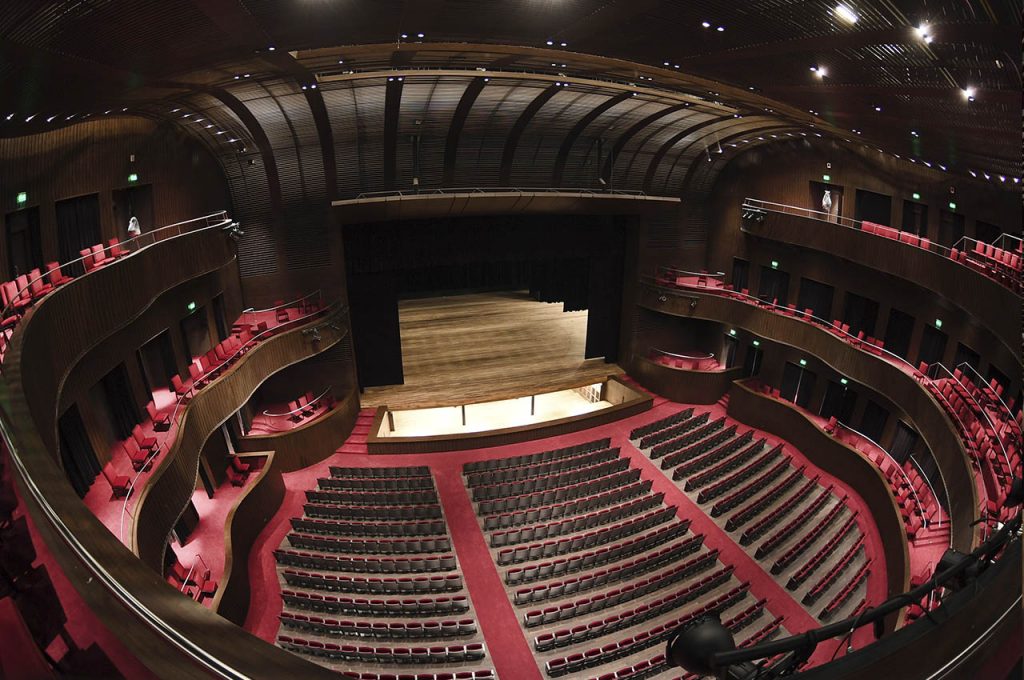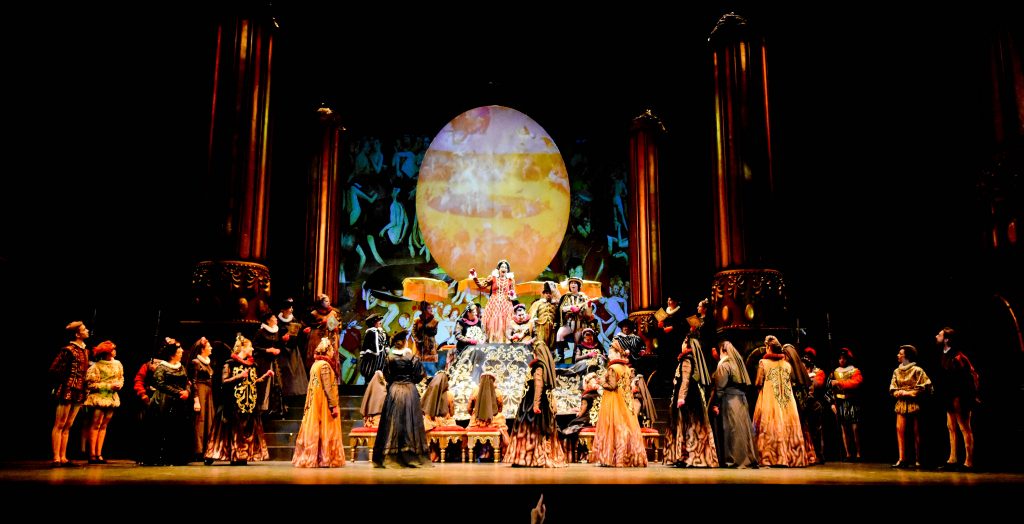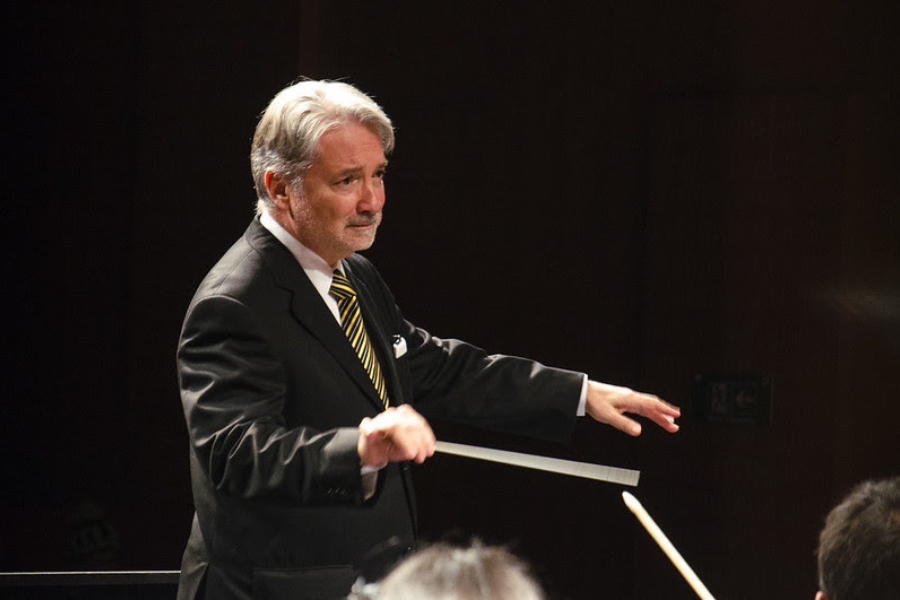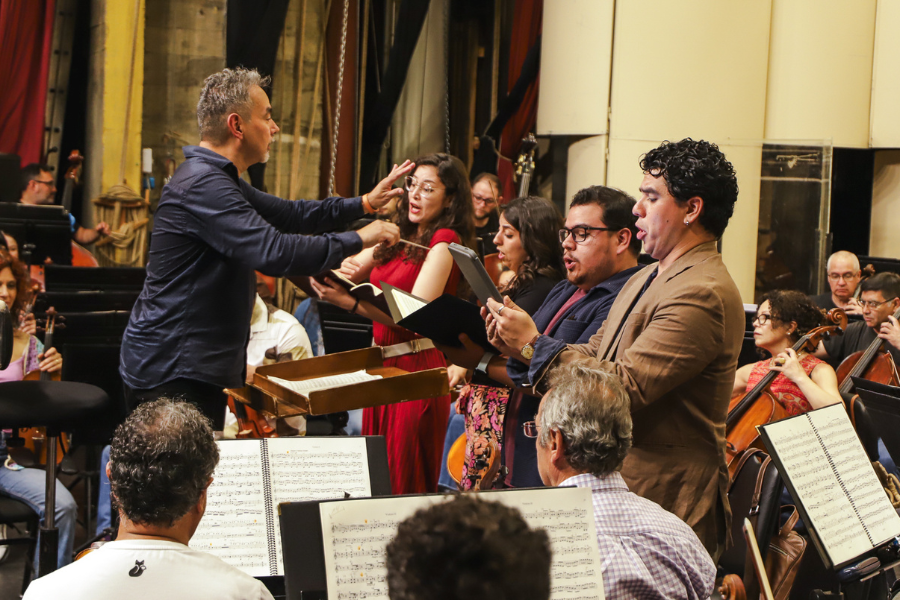Theatre of the Month: Teatro del Bicentenario de San Juan, a sanjuanino pride
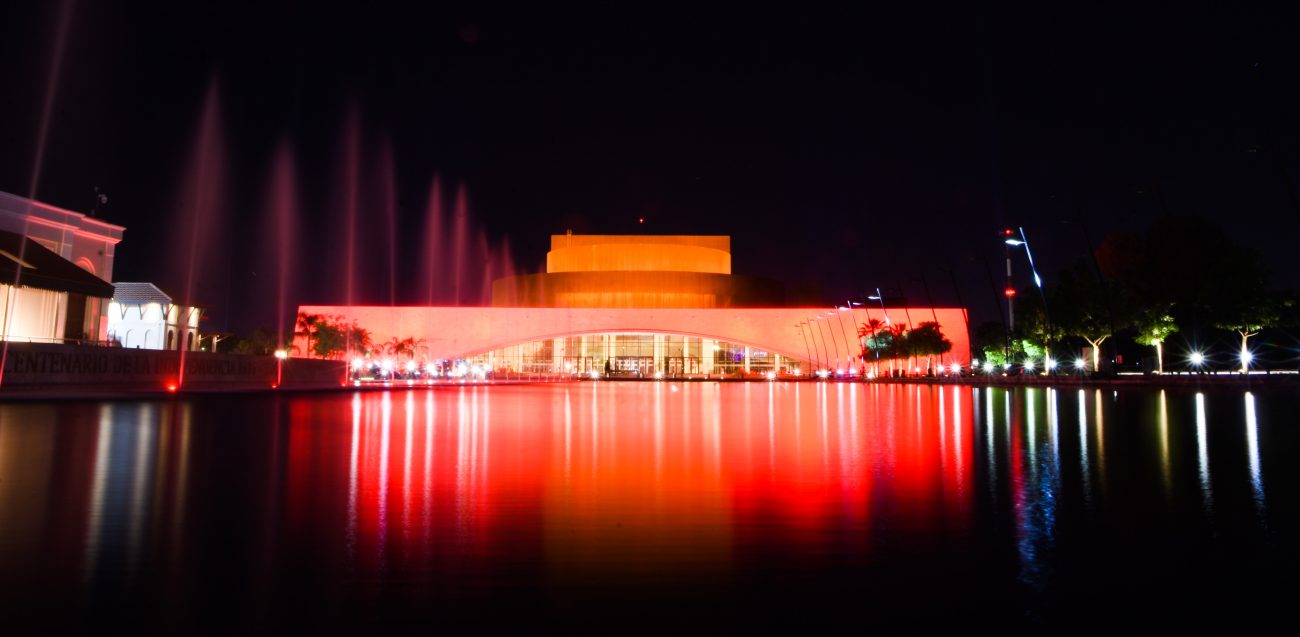
June is here and we start half the year with the new section “Theater of the Month”. Here we seek to publicize the history, architectural heritage, anecdotes and some curious information about the different theaters that make up the OLA network.
In the first installment of the “Theater of the Month” section we want to highlight the Teatro del Bicentenario de San Juan, one of the most significant and modern cultural spaces in Argentina. It is an imposing building where tradition and modernity converge, classic and contemporary shows, and a dedicated vocation to promote and raise the San Juan scene of the performing arts.
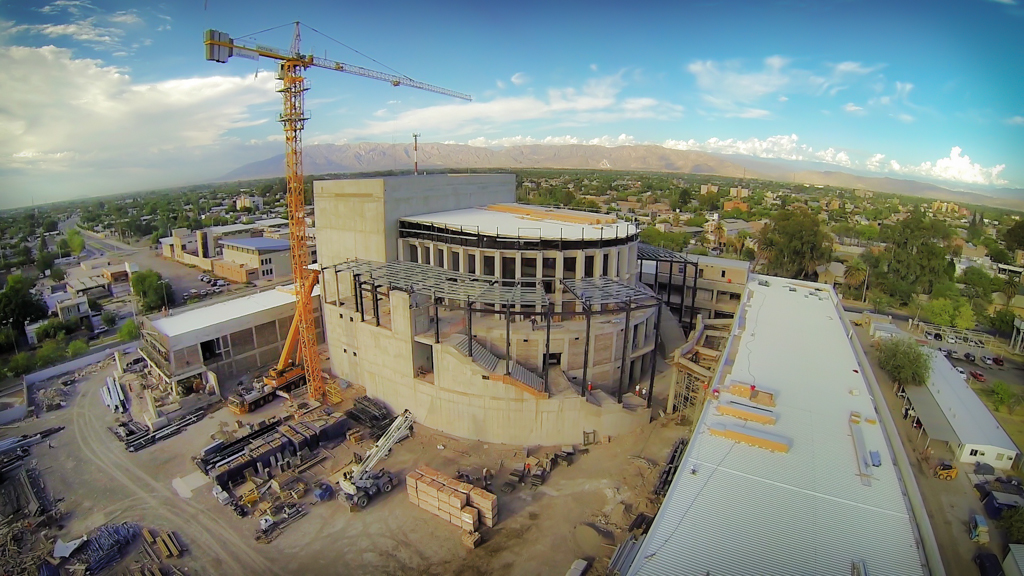
The architects in charge of the work, Guillermo Velazco and Jorge López, sought to design a building “for citizen integration with a strong institutional and regional identity that is both a monument and a landscape.” Photo: Courtesy of the San Juan Bicentennial Theater
STORY
It was a Friday, October 21, in 2016, the day chosen to inaugurate the Teatro del Bicentenario. The premiere was a dazzling grand gala that began immediately with an epic presentation full of lyrical and musical power: the work “Carmina Burana” (1937), by Carl Orff. The performance brought out the different choral companies of the San Juan province, accompanied by the Symphonic Orchestra of the National University of San Juan and the direction of the Swiss maestro Emanuel Siffert.
Not only the musical selection of the program was formidable. The staging was in charge of the Spanish company La Fura dels Baus. The intensity of the staging, typical of the style of “La Fura”, presented a load of aesthetic experimentation and symbolism, a spectacle of colors and spiritual images.
The theater is located between the avenues España, Las Heras, Córdoba and Ignacio de la Roza. But it is not just any block; the area represents a place of important historical-patrimonial value for the people of San Juan. The former San Martín Station is located there, originally built in 1855 and an icon of the early days of San Juan, where the memory of the passing of the train and its legacy as a meeting point and hustle and bustle in social life is kept alive. modern.
ARCHITECTURE
We are in the enclosure that houses the “Bicentenario San Juan”. A huge body of water stretches out in front of this distinctive postmodern-style building.
The architects Guillermo Velazco and Jorge López worked from day one to design and locate the theater. Both of San Juan origin, they opted to create an innovative urban landmark, “for citizen integration with a strong institutional and regional identity that is at the same time a monument and a landscape.”
If we look at the theater as passersby, the first thing that stands out is a large 6-meter-high arch that symbolizes the “Portal del Bicentenario” to welcome in the imposing façade. Once we enter the theater facilities, it is not difficult to find the three axes that define it and that also consisted of a challenge for its construction: acoustics, blocking earthquakes and adjusting to the climate of the province.
ACOUSTICS
The engineers Gustavo Basso and Rafael Sánchez Quintana, recognized for their work in the Colón Theater, the Argentine Theater of La Plata, the “Blue Whale” of the Kirchner Cultural Center, the Usina del Arte, among other spaces, were in charge of taking perform the sound and acoustic operation in the main hall with three levels, where we are located.
The seats, for example, were specifically designed to help with this task. Their characteristic is a special fabric called “trevira” which, due to its spinning shape, makes it fire retardant (it rejects combustion and protects against fire). They also have a system that does not produce sound, if they are closed or accommodated, in such a way that they do not distract the public or the artists.
THE MAIN ROOM
Looking at the Main Hall of the theater, we can identify a horseshoe shape that follows the Italian tradition in the design of opera amphitheaters. The capacity is for 1,129 spectators distributed in three levels, divided into stalls, low box, middle box, high box and presidential box.
As we approach the stage, we find the location of the orchestra, a large Bayreuth-style moat with space for approximately 100 musicians. If we look up, the stage measures 17.70 meters wide by 32 meters deep and 26 meters high.
We distinguish between a fireproof entrance curtain, a fire curtain and a forum curtain. We enter the part “behind the scenes” and enter a “chapel”, the space used to put together the sets and prepare the artists for the performance.
AUDITORIUM ROOM
The Teatro del Bicentenario de San Juan also offers a smaller chamber, specially designed for small shows. In the Sala Auditorium we can choose between 194 seats to enjoy concerts or presentations of classical and contemporary dance.
A stage 11 meters wide by 9 meters high is erected in a room that also takes special care for the acoustics that characterize this entire theater.
EARTHQUAKES AND CLIMATE
San Juan is a land of earthquakes. The contact of the Nazca Plate with the South American Plate makes the western region of Argentina permanently at risk of earthquakes. With this phenomenon in mind, the architects and engineers who worked on the construction of the theater were concerned with dividing the building block into parts that move autonomously and smoothly in the event of an earthquake, imitating the physics of train cars.
The climate in this northwestern Argentine province is characterized by being semi-arid and high mountain given the Andes mountain range. We can leave the Main Room for a moment and take a walk through the interior patios, built in such a way that they generate a microclimate and thermal conditioning ideal for San Juan temperatures.
FEATURED SHOWS
The Teatro del Bicentenario is a source of pride for San Juan not only for its modern architectural proposal and building technology. On top of this stage, works have been presented that bring spectacles such as opera, ballet and chamber concerts closer to the public.
In 2019, the Main Hall was filled with spectators who enjoyed the opera The Magic Flute, by W.A. Mozart, in a historic debut that presented a version adapted to Spanish in conjunction with the Mozarteum Foundation of Salzburg. Other operas of great invoice and production that have passed through the San Juan stage were the classics Don Carlo and Aida, both masterpieces by the Italian composer Giuseppe Verdi.
Also in 2019, the theater included in its programming performances of The Messiah, Händel’s immortal work under the choreographic conception of Mauricio Wainrot. The version, with scenery by Óscar Aráiz, presented a diaphanous and minimalist stage to replicate the effects and sensations of the sky.


